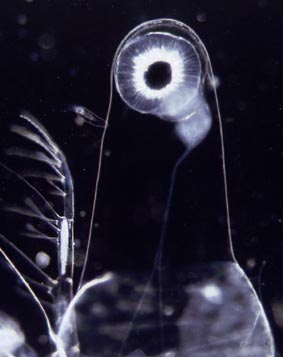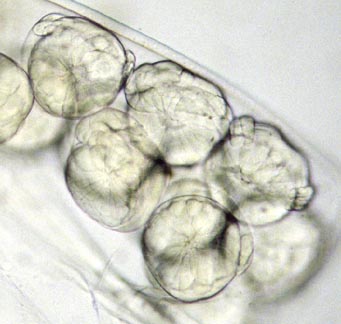
The Giant Water Flea
Leptodora kindtii
by Wim van Egmond
I changed the lighting of my microscope into dark field illumination. Then the body of this giant wate rflea became visible. Unlike normal water fleas it lacked the characteristic shell, the 'Carapace'. The creature was extremely elongated. The body size was incredible, almost two centimetres. I tried to photograph the organism but it was too large to fit the frame of my camera.

